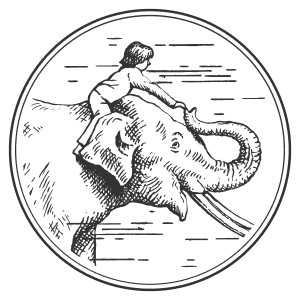/--/uploads/2024/03/ILLUS_WEBSITE_GANESHA_2019023_V01.jpg)
The Kingdom of Ganesha
The Kingdom of Ganesha transports you to the lands of Southeast Asia, those of the elephant-headed god. His Hindu temple is consecrated by priests. It is a living and sacred place where the Balinese community comes to pray. In the Kingdom of Ganesha, you will encounter orangutans, the largest group of Asian Elephants, crested macaques, royal tigers, capuchin monkeys, a Komodo Dragon, and many other animals.
- The trunk, an extraordinary organThe Asian Elephant
The Asian Elephant, along with the African Elephant, is the largest and heaviest land mammal: a male can measure 3.50 meters at the shoulder and weigh up to 5 tons. Living in family groups led by a matriarch, they consume over 200 kg of vegetation per day. The trunk is an extraordinary organ, the result of a fusion between the nose and the upper lip, which can weigh 100 kg and be controlled by around 150,000 muscles.
Asian Elephant - extremely intelligentThe Sumatra orangutan
The orangutan, meaning “man of the forest” in Malay, is a large primate living in the equatorial forest. This extremely intelligent animal uses branches as tools and communicates through gestures rather than calls. Unfortunately, this species is critically endangered with only about 7,000 individuals remaining in the wild.
The Sumatra orangutan - A very rare monkeyThe Crested Macaque
The Crested Macaque is a very rare monkey in a critical situation, which only lives on the Indonesian island of Sulawesi (Celebes). Mainly vegetarian, the Crested Macaque sometimes eats crabs and snails. To communicate with its peers, this monkey has, rather than a range of cries, a range of facial expressions and gestures, for example to greet, warn, intimidate or humiliate the other.
Crested Macaque - the largest lizardThe Komodo Dragon
The Komodo Dragon is the largest living species of lizard can reach up to 3 meters long and weighs an average of 70 kg. Living exclusively on islands in Indonesia, it is the largest predator there, primarily feeding on carrion although it can also hunt mammals, birds, and invertebrates. Its mouth, infested with bacteria, has a venom gland. It thus bites its prey in the abdomen or throat. Classified as vulnerable by the IUCN, the Komodo Dragon is protected by Indonesian law.
The Komodo Dragon - golden coat with black spotsThe Javan Panther
The Javan Panther is a rare and critically endangered species, with an estimated population of less than 100 individuals in the wild. This large feline, characterized by its golden coat with black spots, measures about 1.5 meters in length and weighs up to 80 kg. With remarkable agility, it hunts various prey, including deer and wild boar in the forests of the Indonesian island of Java.
The Javan Panther - communicating through a wide range of soundsThe Asian otter
The Asian otter is mostly found in wetlands in Southeast Asia, as it primarily feeds on aquatic animals. The Asian otter swims very well thanks to small webbed feet with short claws. It catches its prey with its paws rather than its mouth, unlike other otter species. It eats the equivalent of one-third of its weight per day! It is a very sociable animal, communicating through a wide range of sounds and loving to play!
Oriental Small-clawed Otter - a white stripe on the snoutThe Visayan Pig
The Visayan Warty Pig is a species of suid endemic to islands in the Philippines. It is critically endangered: there are only a few hundred left in the wild. The coat of this pig is black-gray with a white stripe on the snout. It can weigh up to 40 kg and stand 50 cm at the shoulder. This animal lives in small groups in tropical forests and highlands. As an omnivore, it primarily feeds at night. After a gestation period of 4 months, the sow gives birth to a litter of 3 to 4 striped piglets for better camouflage.
The Visayan Pig - a dominance hierarchyThe Bolivian Squirrel Monkey
The Bolivian Squirrel Monkey, also known as the Black-capped Squirrel Monkey, is a small primate living in the rainforests of the Amazon. Arboreal, it is active during the day, eating insects, fruits, and seeds. It measures about 30 cm with an even longer tail (36 cm), weighing, as an adult, between 700 grams and 1 kg, with males being larger. They form groups of several dozen individuals, males and females mixed, with a dominance hierarchy. Juvenile males form small clans and try to integrate into existing groups to overturn the power of the older ones. However, in the group, it is the females who dominate.
Black-capped squirrel monkey
/--/uploads/2024/03/PAT_6620-1-e1710255577192.jpg)
/--/uploads/2024/03/Galina_MI4A3536.jpg)
/--/uploads/2024/03/DSC9276.jpg)
/--/uploads/2024/02/0C5A2170.jpg)
/--/uploads/2024/02/MI4A9249-bewerkt.jpg)
/--/uploads/2024/02/DSC_1356.jpg)
/--/uploads/2024/02/Galina_MI4A5509.jpg)
/--/uploads/2024/02/IH4A9965.jpg)
/--/uploads/2024/02/DSC03449.jpg)
Some marvels of The Kingdom of Ganesha
Projects by the Pairi Daiza Fondation
The mission of the Pairi Daiza Foundation is to promote respect and love for the living world by recognising the beauty and diversity of all forms of life on earth. Find out more about our conservation actions here.

/--/uploads/2023/12/app-store.png)
/--/uploads/2024/02/google-play.png)
/--/uploads/2025/02/SITE_Header-2048x1071_Mix-EN.jpg)

/--/uploads/2024/02/Bayon-3.jpg)
/--/uploads/2024/02/MG_1016-HDR.jpg)
/--/uploads/2024/02/Temple-Bali-1.jpg)
/--/uploads/2024/02/0C5A1418.jpg)
/--/uploads/2024/02/DSC9601.jpg)
/--/uploads/2024/02/PAT_1464.jpg)
/--/uploads/2024/02/PAT_6586.jpg)
/--/uploads/2024/02/WIL_9899a.jpg)
/--/uploads/2024/02/app-store.png)